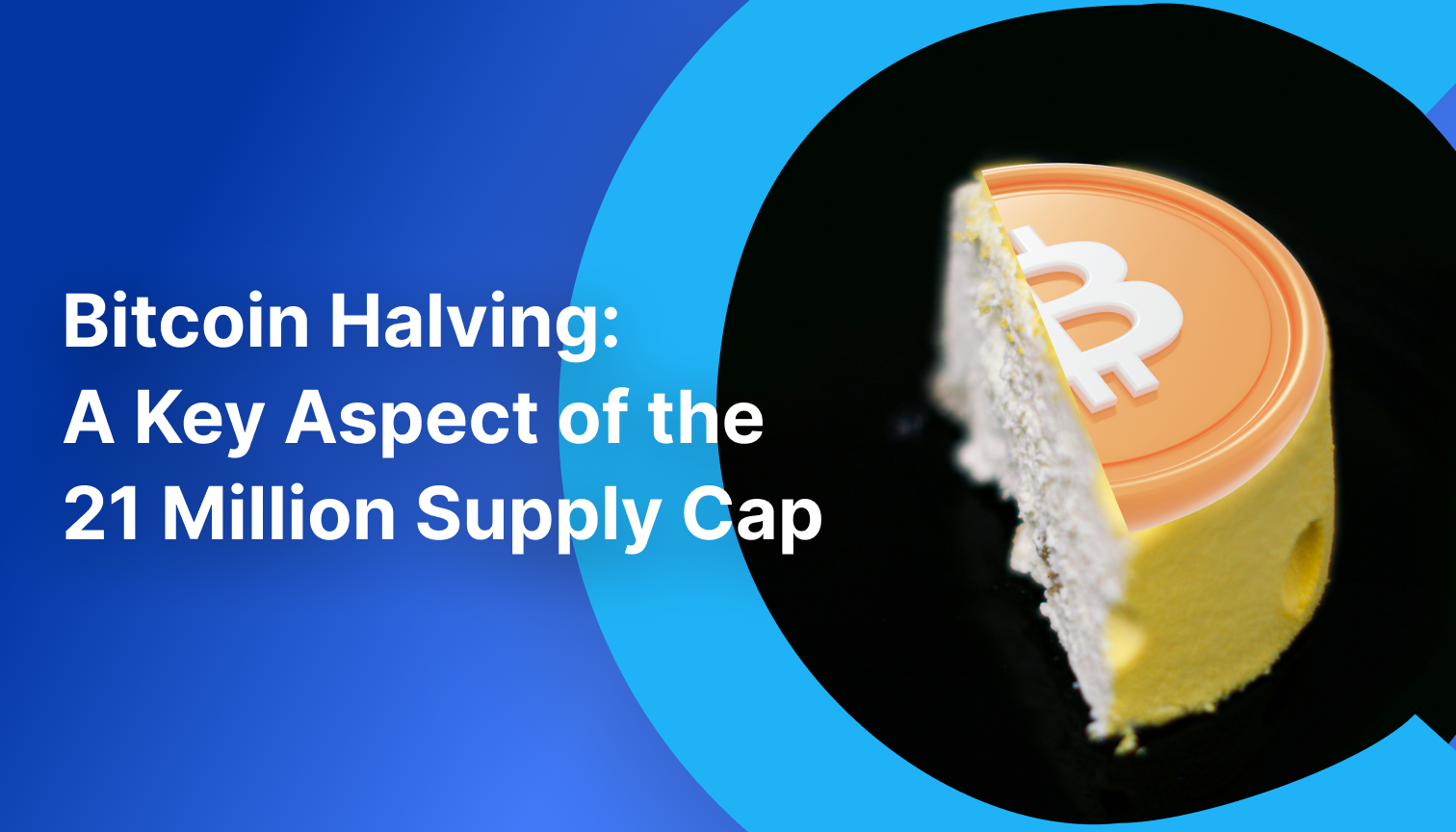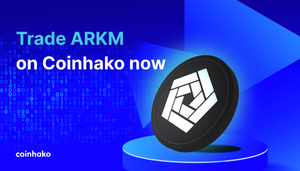With Bitcoin’s next halving event just around the corner, crypto traders and Bitcoin owners from all around the world are following the event closely.
Simply put, halving in this context refers to the halving of the reward for mining Bitcoin. Designed to reduce the rate at which new Bitcoins are created and create scarcity in supply to counteract inflation, this mechanism follows a pre-defined schedule (every 4 years or so) until the total supply cap is reached.
To better understand how this works, it is important to understand Bitcoin’s finite supply of 21 million.
The Limited Supply of Bitcoin
Unlike traditional fiat currencies that can be printed by central banks at will, Bitcoin has a predetermined maximum supply limit. This limit is set at 21 million bitcoins, ensuring scarcity and maintaining its value proposition.
With a limited supply of 21 million coins, Bitcoin's scarcity is designed to mimic the properties of precious metals such as gold. This scarcity is achieved through a process called mining, where complex mathematical algorithms are solved to validate and secure transactions on the network. As more coins are mined, the difficulty increases, ensuring that new Bitcoins are created at a decreasing rate over time.
Bitcoin's digital gold analogy further reinforces its store-of-value characteristics. Just like physical gold has been used for centuries as a long-term store of wealth and hedge against economic uncertainties, Bitcoin offers similar attributes in the digital realm.
Trade BTC on Coinhako
A means to counteract inflation
With inflation a concern for many individuals and economies worldwide, people have been looking at alternatives to traditional fiat currencies which are subject to inflationary pressures due to factors like government policies and economic conditions. Cryptocurrencies with a limited supply cap offer a unique form of inflation protection.
Bitcoin’s cap ensures that no additional coins can be created beyond the established limit – the scarcity created by this capped supply supposedly acts as a safeguard against inflation. As demand for these cryptocurrencies increases over time, their value tends to rise due to their limited availability.
Decentralization and Security
Decentralization is a key characteristic of the Bitcoin network, and the fixed supply plays a crucial role in preserving this aspect. With no central authority controlling the issuance or distribution of Bitcoins, every participant in the network has an equal opportunity to mine or acquire these digital assets. The fixed supply ensures that no single entity can manipulate or influence the availability of new coins, promoting a more democratic and decentralized system.
By limiting the number of Bitcoins that can ever exist, it becomes increasingly difficult for malicious actors to counterfeit or manipulate the currency's value through excessive creation. This scarcity makes it more challenging for hackers to launch attacks such as double-spending or inflating the supply.
The Process Behind the 21 Million Supply Cap
One important mechanism behind the 21 million supply cap is the halving. Approximately every four years, the block rewards for miners are cut in half – this means that miners receive fewer newly minted bitcoins for each block they successfully mine. The purpose of this halving event is to control the rate at which new bitcoins are introduced into circulation.
By reducing block rewards over time, it creates a predictable and diminishing issuance schedule for bitcoins. This helps maintain scarcity and prevents sudden spikes in supply that could potentially devalue existing bitcoins.
These mechanisms work together to control both the total supply of bitcoin and its issuance rate over time. As a result, bitcoin remains a deflationary asset with limited availability, which has contributed to its value and appeal as a digital currency.
Beyond the Halving: What Lies Ahead?
One thing we may witness is growing interest to own Bitcoin and other cryptocurrencies as Bitcoin halving events have historically been associated with price increases. A prevailing hypothesis is that the scarcity caused by a reduced rate of new Bitcoin creation has been key catalyst of the previous bull-ish market windows.
Looking at the past three halving events, it is evident that a significant price rise typically occurs within six to twelve months afterward. Additionally, in anticipation of a price rally post-halving, the price of Bitcoin tends to increase before the actual halving event as investors show their confidence in its future value. Take a look at BTC prices for previous halvings:
2016 Halving
BTC price pre-halving: US$663
BTC price 1 year after halving: US$2550
2020 Halving
BTC price pre-halving: US$8740
BTC price 1 year after halving: US$9725
However, it is also important to note that Bitcoin’s is a highly volatile asset and past performance is not a definite indicator of a price rise this next halving. Market dynamics and many other factors such as market demand, investor sentiment, macroeconomic conditions, and even technological advancements can also impact its value.
While some experts offer projections based on technical analysis or historical trends, it is crucial to approach these forecasts with caution as they are subject to change — what will happen to Bitcoin this next halving remains to be seen.
Trade BTC on Coinhako
Risk Warning on Digital Payment Token Services
Hako Technology Pte Ltd ("Coinhako") is licensed to provide digital payment token services under the Payment Services Act 2019 (No. 2 of 2019).
The Monetary Authority of Singapore ("MAS") requires us to provide this risk warning to you as a customer of a digital payment token ("DPT") service provider.
Before you pay your DPT service provider any money or DPT, you should be aware of the following.
- Your DPT service provider is licensed by MAS to provide DPT services. Please note that this does not mean you will be able to recover all the money or DPTs you paid to your DPT service provider if your DPT service provider’s business fails.
- You should not transact in the DPT if you are not familiar with this DPT. This includes how the DPT is created, and how the DPT you intend to transact is transferred or held by your DPT service provider.
- You should be aware that the value of DPTs may fluctuate greatly. You should buy DPTs only if you are prepared to accept the risk of losing all of the money you put into such tokens.
- You should be aware that your DPT service provider, as part of its licence to provide DPT services, may offer services related to DPTs which are promoted as having a stable value, commonly known as “stablecoin”.
Visit: Coinhako.com/risk-disclosure for more information.






